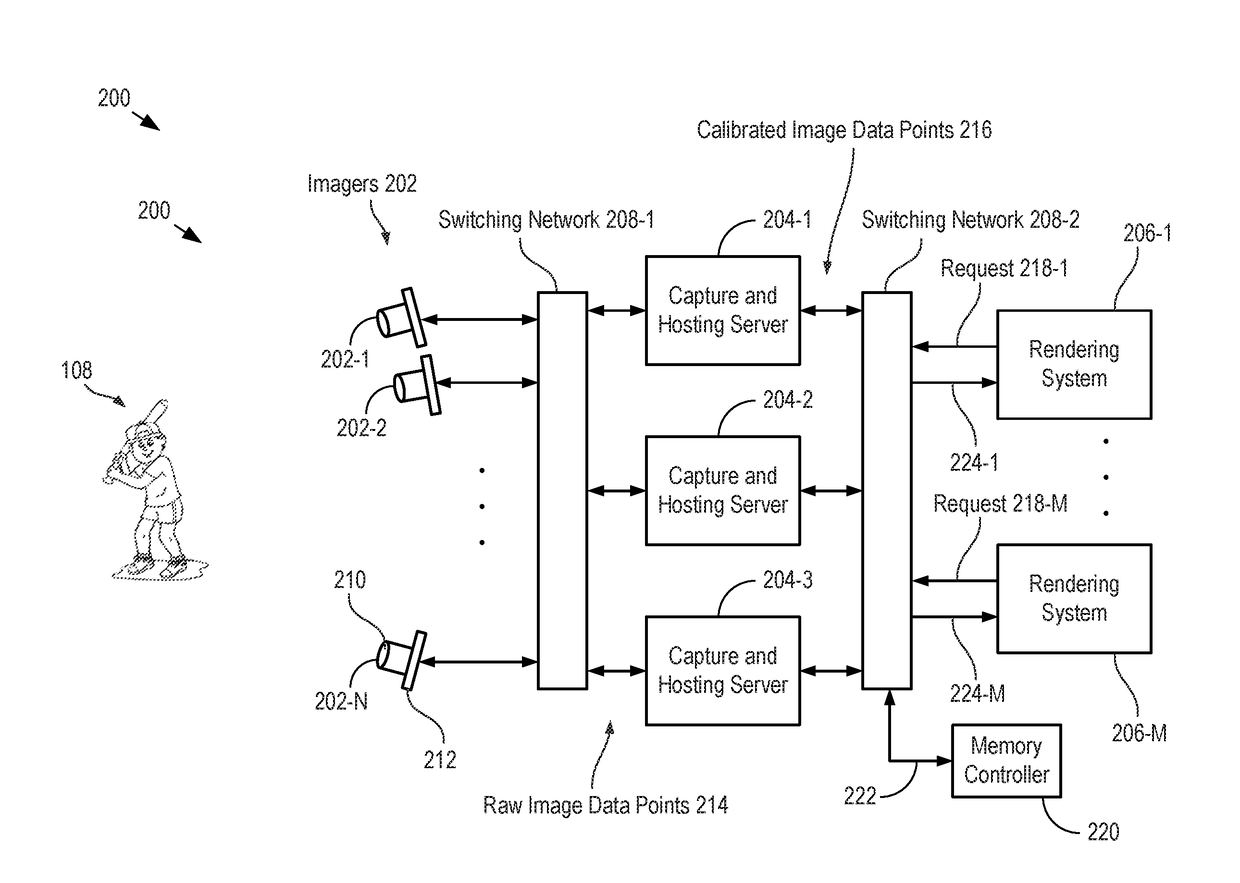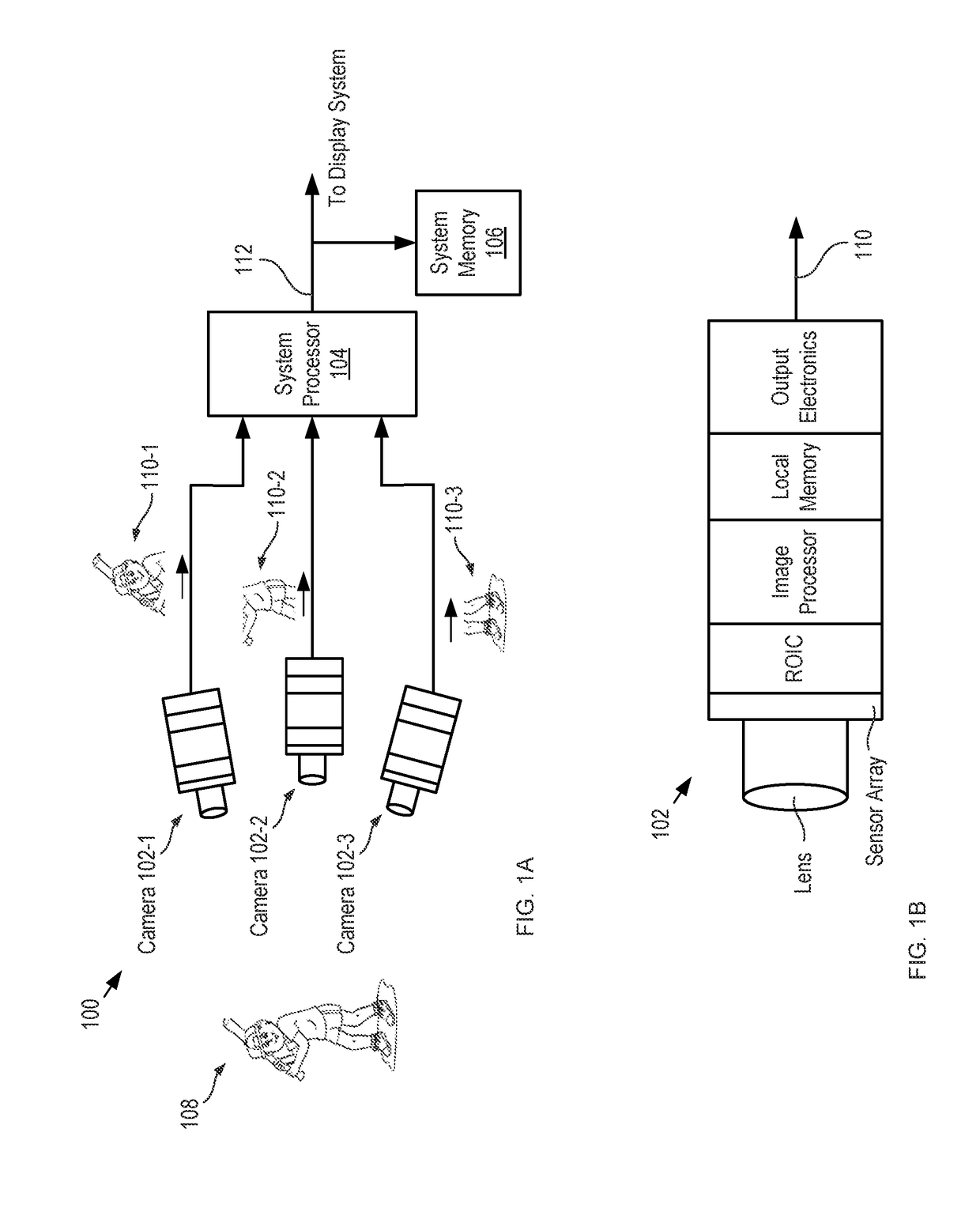Multi-array camera imaging system and method therefor
a camera imaging and camera technology, applied in the field of imaging, can solve the problems of inability to fully stitch images in the prior-art multi-sensor array imaging approach to display devices, inability to achieve full stitching images, and inability to achieve the effect of delivering large amounts of raw pixel data between imagers and display devices, and achieving fast imaging systems. , the effect of overcoming latency and bandwidth problems
- Summary
- Abstract
- Description
- Claims
- Application Information
AI Technical Summary
Benefits of technology
Problems solved by technology
Method used
Image
Examples
Embodiment Construction
[0026]FIG. 1A-B depict schematic drawings of a conventional array camera and an individual microcamera of the array, respectively. Array camera 100 includes a plurality of microcameras 102-1 through 102-3, system processor 104, and system memory 106. Array camera 100 is representative of typical prior-art multi-sensor-array cameras wherein the sensor arrays reside in individual microcameras.
[0027]Each of microcameras 102-1 through 102-3 (referred to, collectively, as microcameras 102) is a conventional digital video camera that includes independent sensor arrays, image processing capability and memory. Each of microcameras 102 comprises an objective lens, sensor array, read-out integrated circuit (ROIC), image processor, local memory, and output electronics. Microcameras 102 are arranged such that each microcamera provides a video stream of a different portion of scene 108.
[0028]In each video frame of the video stream, the objective lens of each of microcameras 102 forms an optical ...
PUM
 Login to View More
Login to View More Abstract
Description
Claims
Application Information
 Login to View More
Login to View More - R&D
- Intellectual Property
- Life Sciences
- Materials
- Tech Scout
- Unparalleled Data Quality
- Higher Quality Content
- 60% Fewer Hallucinations
Browse by: Latest US Patents, China's latest patents, Technical Efficacy Thesaurus, Application Domain, Technology Topic, Popular Technical Reports.
© 2025 PatSnap. All rights reserved.Legal|Privacy policy|Modern Slavery Act Transparency Statement|Sitemap|About US| Contact US: help@patsnap.com



